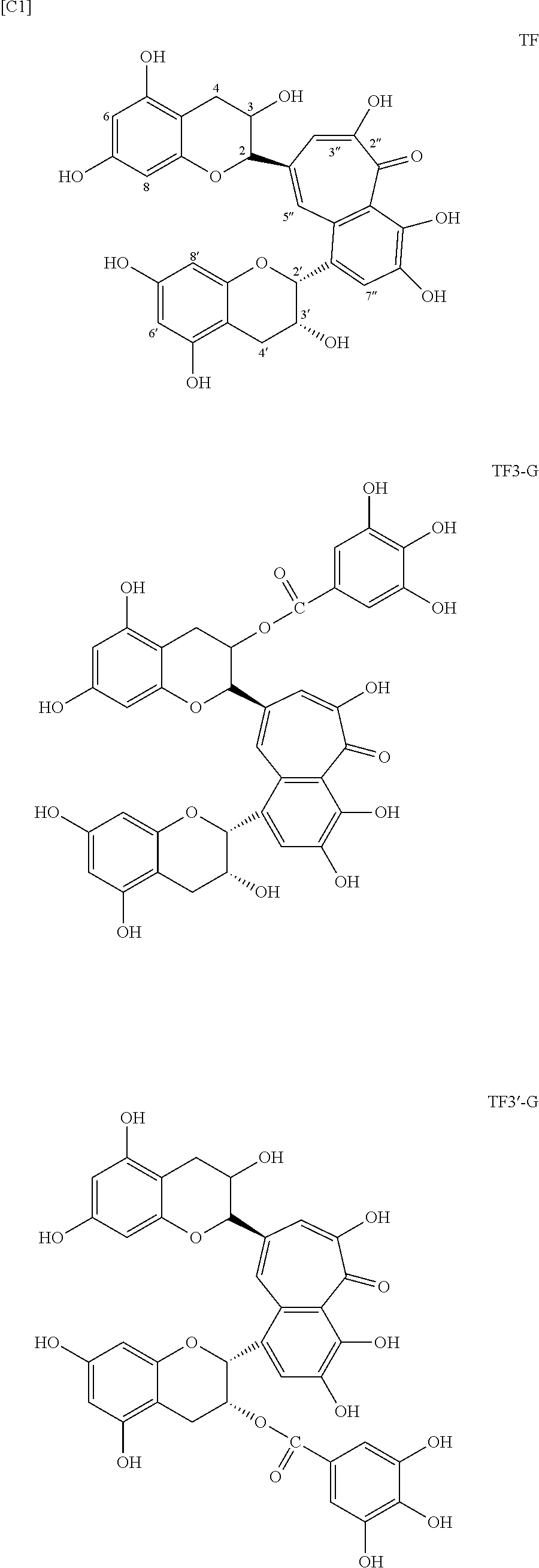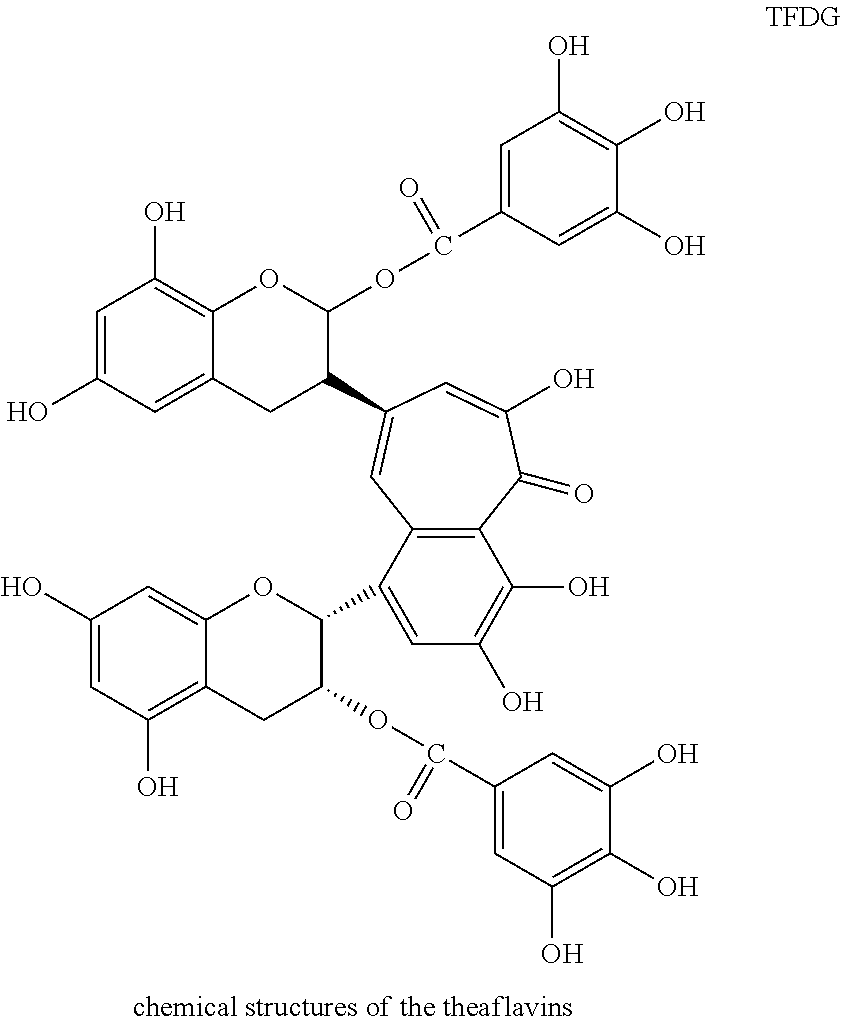Manufacturing method for theaflavins using raw tea leaves
a technology of raw tea leaves and theaflavins, which is applied in the field of process for the preparation of theaflavins, can solve the problems of low yield of theaflavins in all of these methods, and the need for expensive starting materials and enzymes, and achieves efficient conversion to theaflavins, efficient conversion to, and convenient production process.
- Summary
- Abstract
- Description
- Claims
- Application Information
AI Technical Summary
Benefits of technology
Problems solved by technology
Method used
Image
Examples
example 1
[0055]100 mL distilled water was added to 9.55 g yabukita tea leaves harvested on 18 July and milled for 1 minute using a household mixer and then transferred to a 100-mL Erlenmeyer flask, which was capped with aluminum foil and allowed to stand for 24 hours. The mixture was filtered by suction filtration to obtain a filtrate, which was analyzed by HPLC. The results were 75.2 mg TF (0.075%), 14.0 mg TF3G (0.014%), 8.0 mg TF3′G (0.008%), 3.9 mg TFDG (0.004%), 3.9 g EGCG (3.9%), 81 mg ECG (0.081%), and 499.7 mg caffeine (0.5%) per 100 g fresh leaves. The filtrate was extracted with chloroform and the aqueous phase was extracted with ethyl acetate to obtain 11 mg theaflavins (per 9.55 g tea leaves).
example 2
[0056]100 mL distilled water was added to 9.55 g yabukita tea leaves harvested on 18 July and milled for 1 minute using a household mixer and then transferred to a 100-mL Erlenmeyer flask, which was capped with aluminum foil and allowed to stand for 120 hours. The mixture was filtered by suction filtration to obtain a filtrate, which was analyzed by HPLC. The results were 444.8 mg TF (0.44%) and 440 mg caffeine (0.44%) per 100 g fresh leaves. The filtrate was extracted with chloroform and the aqueous phase was extracted with ethyl acetate to obtain 46 mg theaflavin (per 9.55 g tea leaves).
example 3
[0057]800 mL distilled water was added to 9.55 g yabukita tea leaves harvested on 18 July and milled for 1 minute using a household mixer and then transferred to a 1000-mL Erlenmeyer flask, which was capped with aluminum foil and allowed to stand for 120 hours. The mixture was filtered by suction filtration to obtain a filtrate, which was analyzed by HPLC. The results were 850 mg TF (0.85%) and 435 mg caffeine (0.44%) per 100 g fresh leaves. The filtrate was extracted with chloroform and the aqueous phase was extracted with ethyl acetate to obtain 79 mg theaflavin (per 9.55 g tea leaves).
PUM
 Login to View More
Login to View More Abstract
Description
Claims
Application Information
 Login to View More
Login to View More - R&D
- Intellectual Property
- Life Sciences
- Materials
- Tech Scout
- Unparalleled Data Quality
- Higher Quality Content
- 60% Fewer Hallucinations
Browse by: Latest US Patents, China's latest patents, Technical Efficacy Thesaurus, Application Domain, Technology Topic, Popular Technical Reports.
© 2025 PatSnap. All rights reserved.Legal|Privacy policy|Modern Slavery Act Transparency Statement|Sitemap|About US| Contact US: help@patsnap.com



